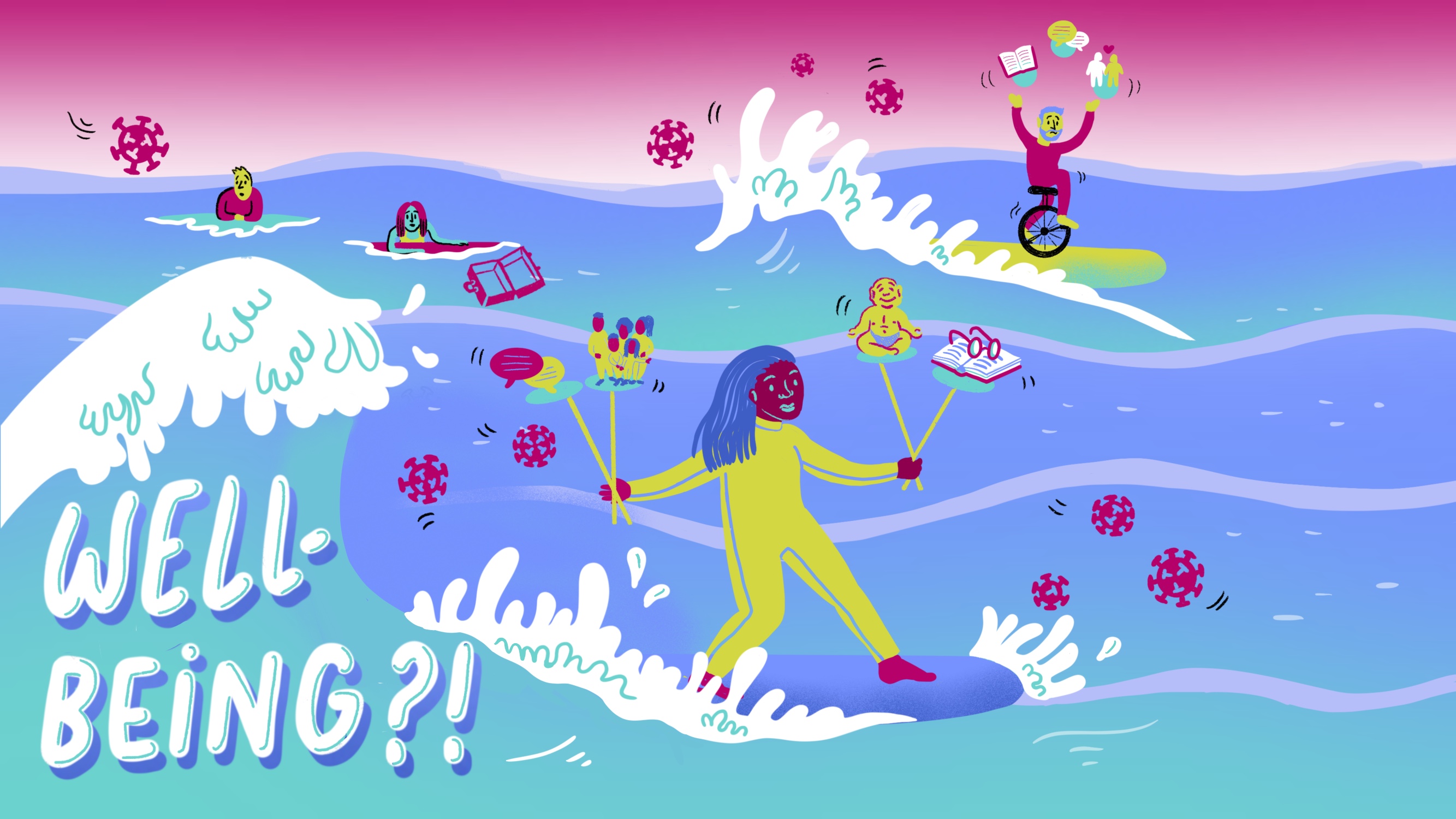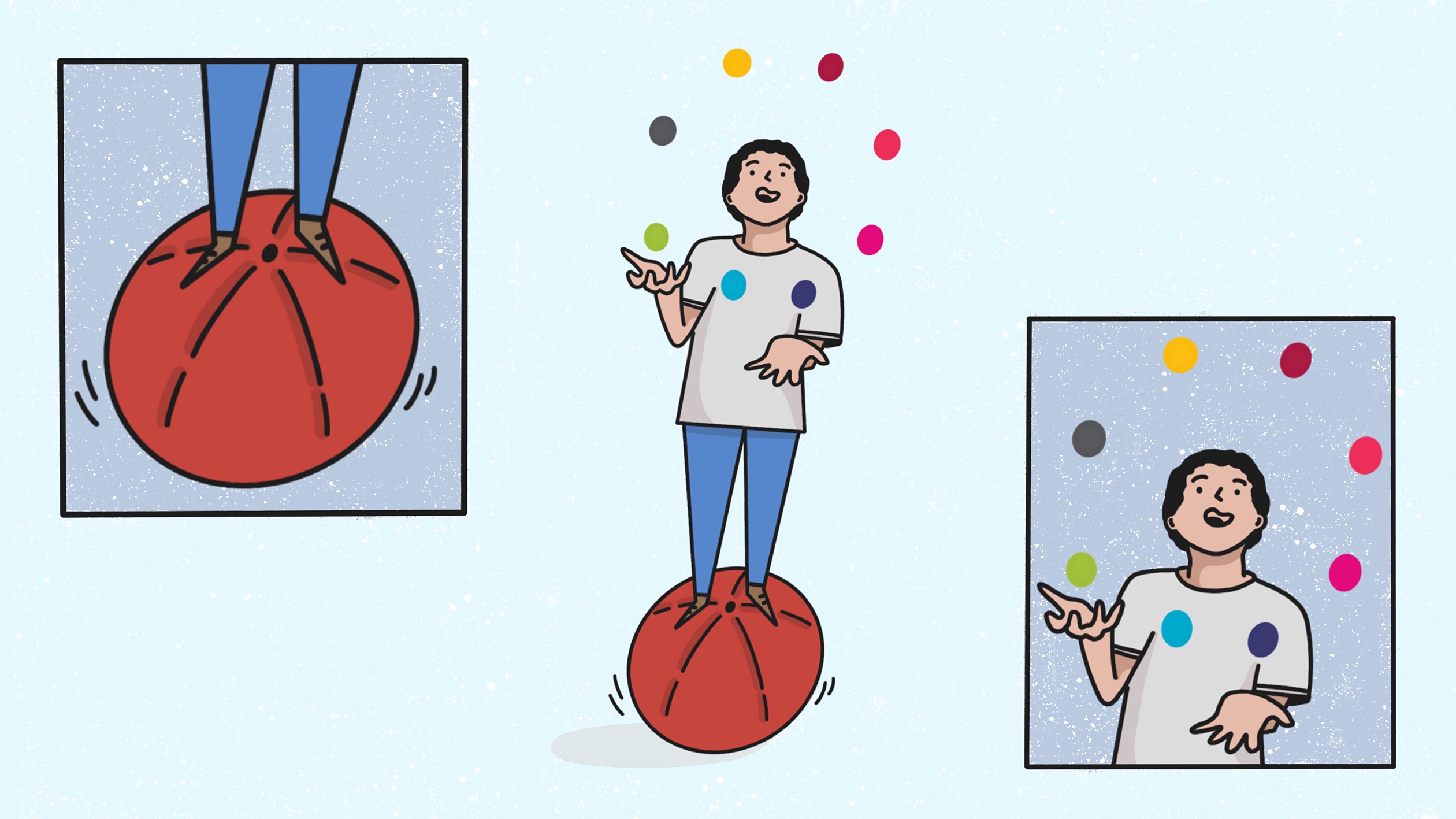Dimensions of well-being
One of the many ways to understand what youth work has to do with the well-being of young people
by Monika Kezaite-Jakniūnienė
02/12/2021
 The definition of well-being
The definition of well-being
(Too) many years ago I was studying linguistics and although it was not my cup of tea, I took one lesson from the linguistic point of view – the importance and power of words we use to name things. So, when I am on the way to exploring new concepts, I usually start looking at how they are named/called.
So, here we are. Well-being. Despite the conundrum of how to spell this word correctly (with or without a hyphen), we can clearly see that it’s made of two words. I understand the first part (“Well“), but I have questions about the second part (“being”). Why “being”? Why not “feeling”? It would be so logical, because that’s how we understand if we are well – by feeling it, don’t we? Or why not “doing”? – it would indicate that we need to act upon our wellness. Apparently, there’s a reason for calling it “being”, if we look at the definition of well-being by World Health Organization – “a state of complete physical, mental, and social well-being and not merely the absence of disease or infirmity”. I believe, defining well-being as a “state” implies that it’s more lasting than just a feeling or action, but these parts are also important!
Besides, let’s have a look at the synonyms of well-being – they usually broaden the understanding of the concept – comfort, health, happiness, safety, wellness. Or if you fancy Greek roots – eudaemonia.
 Is my “well” the same as your “well”?
Is my “well” the same as your “well”?
Although I said that the first part of “well-being” was clear to me, but... it’s an adjective! So it’s meant to give description or even modification, and both of those are subjective. Can we speak about well-being objectively? I believe we all have examples, how diverse circumstances affect different people, so what’s well-being to me might not be well-being to you. Can we have a common background to talk about well-being? Can we compare the state of wellness of two people?
In my search for an answer, I came across documents from the World Health Organization discussing these very issues. They identify that general well-being includes objective and subjective elements. It comprises an individual’s experience of their life as well as comparison of life circumstances with social norms and values. So, it seems well-being can only partly be seen objectively. Objective parameters could be household income and income distribution, the proportion of children in education or accessibility of educational services, crime rates in the close environment and similar parameters. Subjective elements include the perception people have about themselves and their life satisfaction.
 Dimensions in a whole being
Dimensions in a whole being
Also, while exploring new phenomena, I like to look at the opposite of the particular concept. What is the opposite of well-being? No, it’s not bad- or sad-being. It’s ill-being! This antonym highlights how closely well-being is related to health. Taking care of your well-being is directly linked to your health, i.e. life.
Given the importance of well-being, let’s see where we can start to act upon our own well-being and the well-being of young people. The great finding is that well-being is multidimensional, so individual dimensions might give us a hint as to what are the obstacles to our well-being or where to start improving. There are many models defining those dimensions, but it should not be forgotten that all dimensions are closely related and interlinked. It is the reason that health means wholeness (health (n.) – old English hælþ “wholeness, a being whole, sound or well) and the approach to well-being should be the same. And sometimes, I believe, when we speak about our health or wellness we miss a holistic approach to ourselves. I assume it’s the consequence of the Western approach to health and human development, which separates mind, body and the environment. This assumption can also be supported by the popularity of Eastern philosophies and practices (like Yoga, Tai Chi, Ayurveda or many others) among us nowadays. And I believe this is precisely because they suggest a holistic point of view.
Having this in mind, let’s look at the model, called 8 dimensions of wellness, introduced by Margaret (Peggy) Swarbrick. By introducing each dimension separately I will also link it to young people and youth work reality.
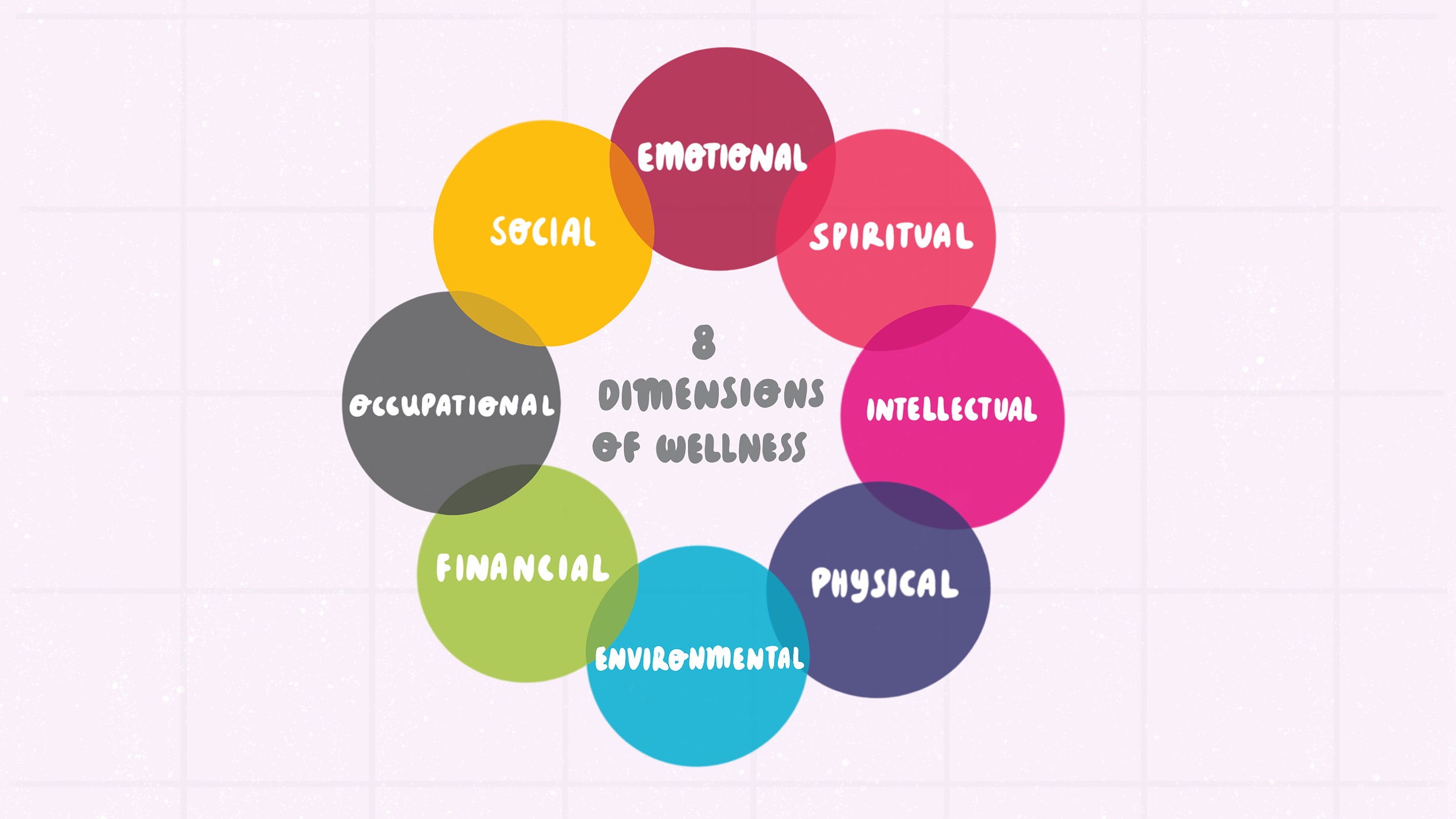
Emotional dimension is about the ability to identify and express your feelings and emotions, being able to cope with emotional challenges, having a sense of positive self-regard and attitude to life in general.
Social dimension covers building and maintaining meaningful relationships, living an enriching social life and having a sense of connection and belonging. This area also includes having a support system in case life gives you hard times.
The emotional and social areas are profound aspects of youth work and non-formal learning in general. This is because they are closely related to the fundamental needs of young people (if we’re speaking about stages of human development) – young people have the need for belonging as well as the need for independence. These opposing forces create an exciting space for the youth worker to step in.
Occupational dimension in general terms speaks about how satisfied you are with what you do. This could be employment, but also participation in any kind of activities, including voluntary ones. The extent to which you find these activities meaningful and purposeful determines the extent to which this dimension is realised. For young people on the journey of creating themselves, it’s very important to try out and experiment with the diversity of activities. These experiences might be crucial in choosing their professional pathway and guidance from the youth worker is very important.
Financial dimension in the model is well described as “the ability to have financial resources to meet practical needs, and a sense of control and knowledge about personal finances”. Young people do not usually have a stable income, and especially if they are still at school, they depend on the financial situation of their caregivers. But this dimension also includes the financial habits we have and this is a competence to be developed. I remember when I mentored an international volunteer in the frame of the European Voluntary Service. At the beginning of his year-long project he would spend his entire monthly pocket money in the first two or three days. And he was very unhappy for the rest of the month. Lots of learning happened there!
Environmental dimension is defined in micro and macro levels. The micro level involves the direct environment you’re involved in – where you live, where you work, study or where you socialise. The macro level includes the broader environment – our community, country and whole planet. When looking at both levels we measure how safe and stimulating this environment is. In micro level, the youth worker (depending on how developed the social system is) can intervene in a young person’s environment in case it’s not safe, and also contribute to the enriching environment of the youth work activities. Here is an example from the macro level – in the last decade there’s the emerging and increasing phenomena of climate anxiety among young people. Recent studies show that more than a half of young people surveyed state that climate anxiety is affecting their daily life and well-being in general. For them, climate change is very personal, as in the prospect of their future it affects them very directly. We can easily imagine how the Covid-19 pandemic has contributed to their fears.
Physical dimension involves recognising and responding to the need for physical activity, nutritious foods and sleep. It’s about maintaining habits to support your physical health as well as access to optimal healthcare. As basic as this dimension might sound, for many adults, as well as young people, it’s not so easy. The requirements and advantages of modern life paradoxically make it challenging to take care of our physical needs. Let’s take sleep as an example. There are studies showing (but I am sure many of you can witness from your own experience) increased sleep deprivation and the negative effects of sleep loss for (young) people and their well-being. And as we get older we know very well what a difference a good night’s sleep makes for the upcoming day.
Intellectual dimension is all about lifelong learning. It’s about finding ways to expand our knowledge and skills. This dimension involves many things that keep our brains active and new neural connections building. For those involved in the educational system, this dimension might be always “activated” and for those who are not, this dimension might become a goal on its own. Despite that, the intellectual dimension is not merely seen through academic intelligence. I’d like to look at this dimension through a perspective of multiple intelligences, as this allows appreciating the different potentials a young person has and wants to develop, while the role of youth work can be to support it.
Spiritual dimension should not be automatically confused with religion only, although when I was searching for studies on young people and spirituality in Europe, I could find a lot related to their religious beliefs. But this dimension has a broader spectrum – it involves having a sense of meaning and purpose in life, also awareness of your values and how integral they are with your everyday life. This sense might be built through different ways and religion is one of them. I was wondering how this dimension is approached in youth work. In many youth work and non-formal learning activities, discussions about values, human rights and personal pathways are frequently occurring. This means that this particular dimension is on the agenda in youth work, although not named as spiritual.
 Which is the most important?
Which is the most important?
While reflecting on all the dimensions I kept thinking if there’s any of them that are more important than others. I fully understand that they are all related and dependent on one another. Also, the circular model of eight dimensions of wellness by Margaret Swarbrick does not suggest any hierarchy, which allows us to think that wherever we start in the model it will influence others (and this counts for when we try to support our well-being and also when we hit hard times to maintain it). But is there any dimension which is superior to others? In search of an answer I’ve run a short poll among my Facebook friends, asking them “What are the first words that come to your mind when you hear ‘well-being’”. I assumed this would show the rise of a specific dimension. In the sample of 64 answers the most popular one was balance. I believe this answered my question perfectly. The key to maintaining well-being is balancing between all dimensions. The key and the real challenge.
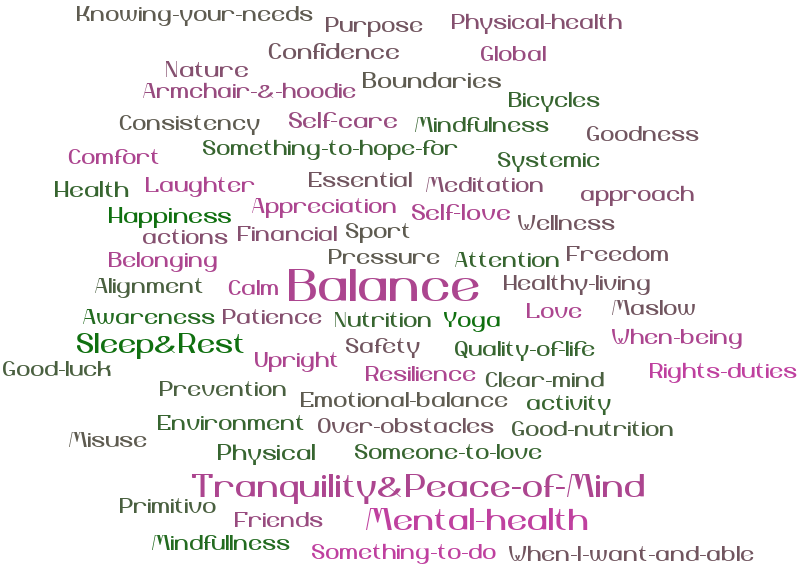
Looking at the word cloud of poll results, what caught my attention was the recurring answer “mental health” (named in one or other way). I wondered how well-being is related to mental health. How does mental health fit into the concept of well-being? According to the World Health Organization, “Mental health is a state of well-being in which an individual realizes his or her own abilities, can cope with the normal stresses of life, can work productively and is able to make a contribution to his or her community”. I interpret this definition that your well-being results in positive mental health, so there’s a causal link between these two concepts. In this Coyote edition mental health and its role in youth work will be explored in other articles, so I will not go into this topic further, but I’ll refer you to a comprehensive resource – www.positivementalhealth.eu. It’s the web page of a very interesting project on mental health and youth work. Get inspired!
 Mind well-being in youth work
Mind well-being in youth work
Rereading what we have already explored in this article until now, I am amazed at what a big role youth work plays in supporting the well-being of young people. Different dimensions could be tackled specifically in particular types of youth work (for example, some activities would focus on employability of young people, others on environmental actions), but in general the main principles and approaches of youth work closely correlate with fostering the well-being of young people.
And finally I wanted to share with you a short and concise checklist, which could support you in understanding how you take care of your own well-being as well as of that of the young people you work with. Also how can you help balance between the eight areas of well-being? I’ve come across 5 ways to wellbeing – a simple and very true model, which states that there are five main ways everyone can contribute to their well-being:
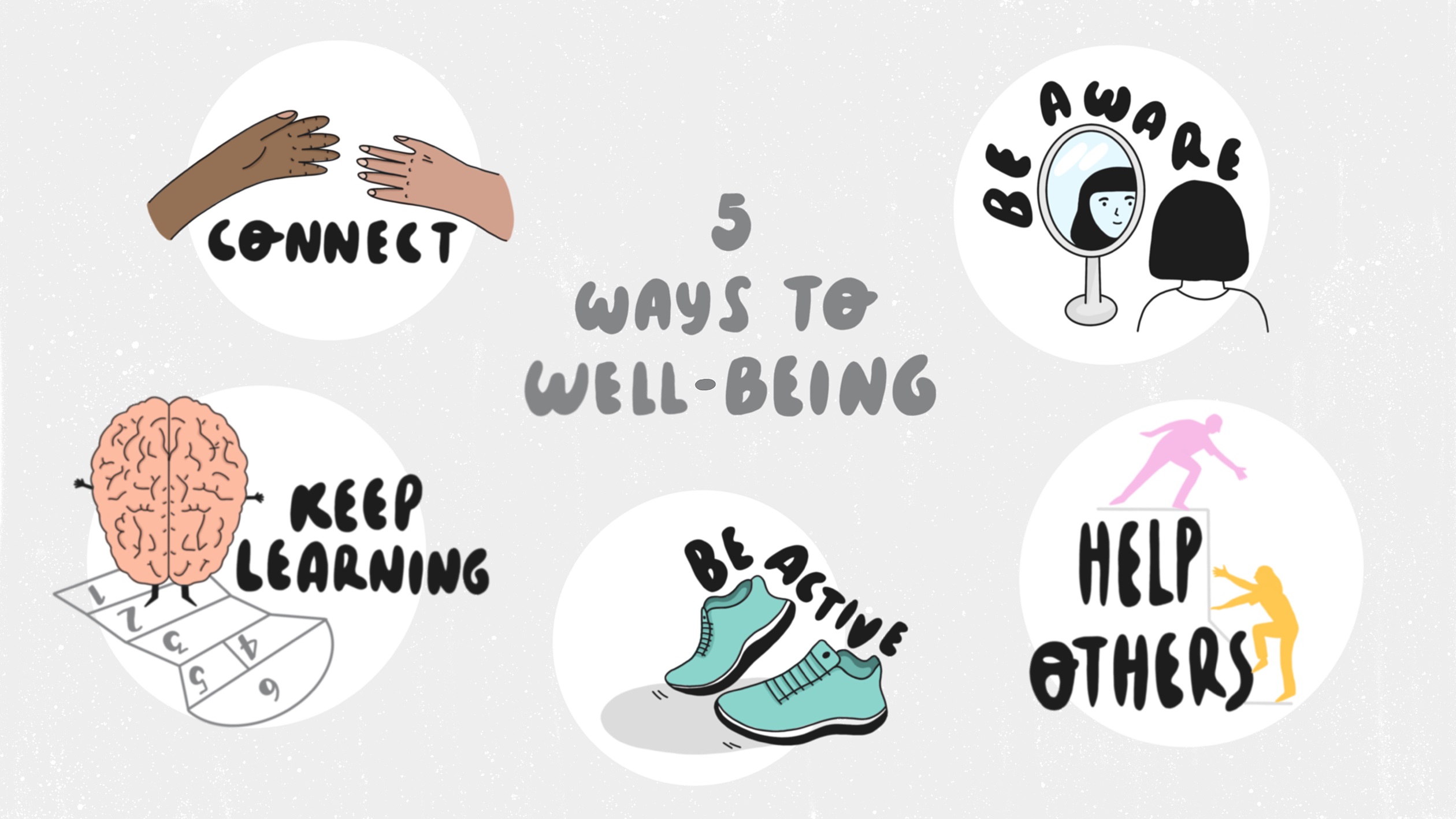
Connect – how satisfied are you with your current relationships and your social life? With whom do you keep the closest connection? How do young people interact in your youth work activities? How do they keep in contact with each other? To what extent do they build and maintain meaningful relationships?
Be active – how much physical activity do you have in your day? What is your favourite way to exercise? How much do young people move actively in your youth work activities? How much physical activity do you take into consideration while organising your activities?
Keep learning – what have you learnt today? What kind of learner are you? How are young people challenged in your youth work activities? What do they consider to be exciting learning situations?
Be aware – how do you reflect? How do you approach your “here and now” moments? What are your favourite self-reflection practices? How much reflection does your youth work offer to young people? How do young people respond to reflection?
Help others – are you involved in voluntary activities? What does it mean to you to help others? How much solidarity opportunities does your youth work offer?

